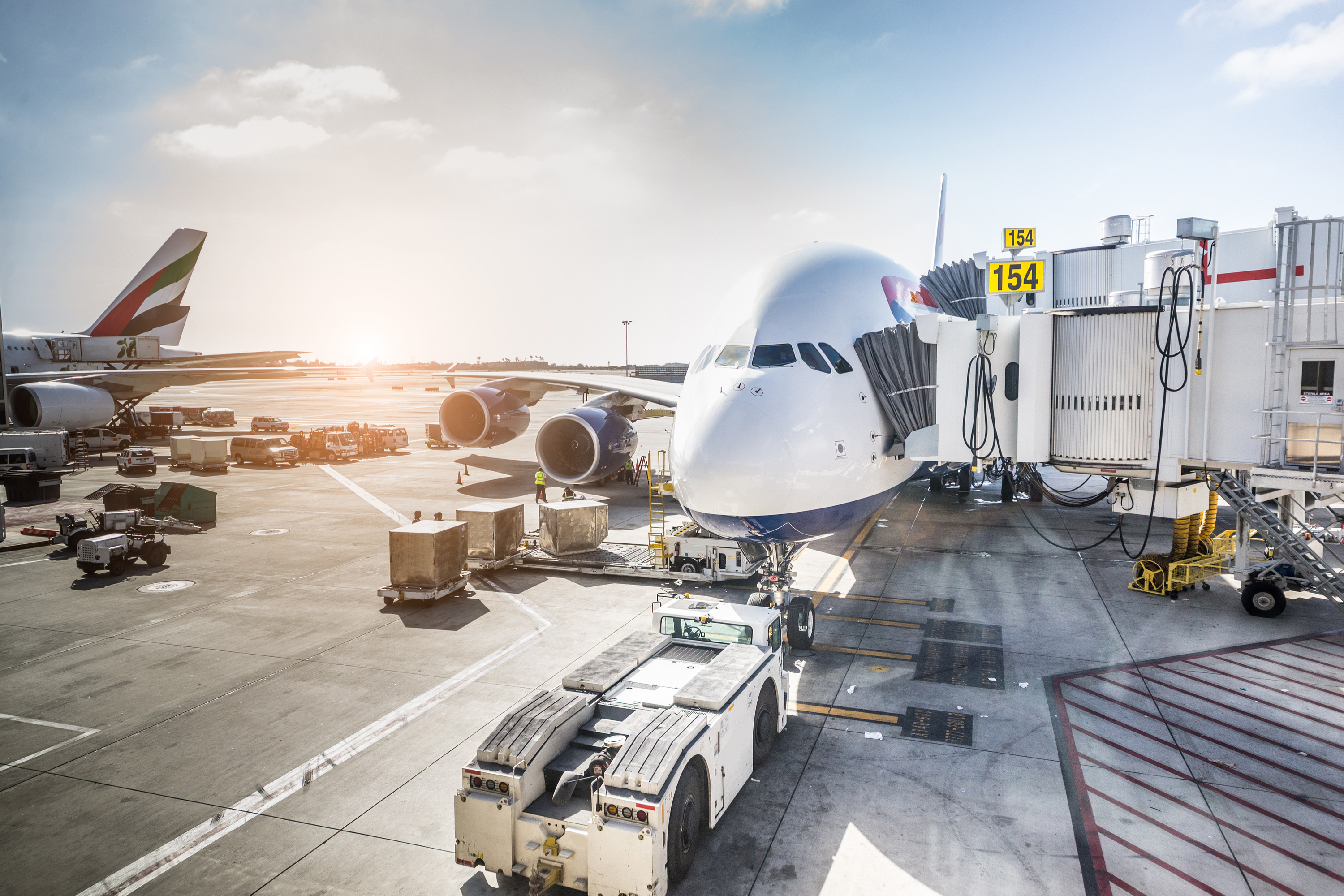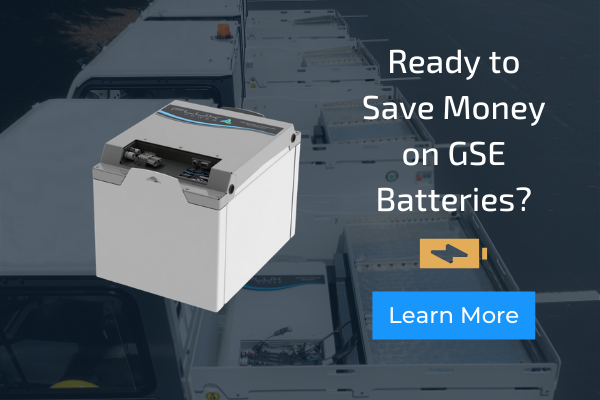While air travel is coming back and the airline industry is starting to recover from the pandemic, there is still a need to manage costs to resume normal levels of profitability.
With flights resuming, airport GSE fleet managers need to start looking for cost-saving opportunities wherever they exist. These areas for cost savings can include looking for:
- More energy efficient power solutions for GSE
- Ways to reduce environmental hazards
- Emission reduction programs
Lithium-ion powered GSE has revolutionized the way ground operations function by providing cleaner and more energy-efficient technology. Though lead acid batteries once predominantly powered GSE, lithium-ion technology is gaining traction in the airline industry because of its many benefits.
Increased Efficiency and Capacity
Lithium-ion batteries have a greater energy efficiency than lead acid batteries. This means lithium-ion battery packs can perform the same amount of work while using less electricity/energy versus their lead acid counterparts.
Unlike lead acid batteries, lithium-ion batteries discharge evenly, so ground support equipment performance doesn’t diminish as the battery discharges.
Lithium-ion batteries can be as much as 50% more energy efficient compared to lead acid batteries while still maintaining high levels of performance.
Lithium-ion batteries can go longer between charges as well. Average run times for lithium-ion batteries are about 20% longer than lead acid batteries. This means operators can work through a longer shift with out having to recharge or swap out batteries.
Not only do lithium-ion batteries last longer between charges, but they also require less time to charge because they can accept partial charges, and don’t require a cooling off period after charging. Airports can maximize operational efficiencies through opportunity charging when flights are coming in and out.
Less Hazardous Waste & Risk of Environmental Contamination
Switching from lead acid to lithium-ion battery packs within a GSE fleet can help reduce the risk of hazardous waste and environmental contamination.
Lead acid batteries are filled with corrosive liquid that can create potential environmental hazards. They require regular refilling and maintenance so that they operate properly. If neglected, lead acid batteries can spill and leech hazardous waste. This can result in Environmental Protection Agency (EPA) violations & fines. Lithium-ion batteries are completely self-contained and require no regular maintenance.
Not only do lithium-ion batteries have no hazardous waste attributed to them, the batteries don’t have recycling regulations. Lead acid batteries need to be disposed of as hazardous waste. This means they need to be processed properly to prevent pollution. Most lead acid battery sellers will take the batteries back.
Most electricity is generated from fossil fuels, so there is a recognized carbon footprint associated with electricity use. Because lithium-ion batteries are more energy efficient than lead acid batteries, they use less electricity to do the same work, and thereby have lower emissions associated with them.
Federally Sponsored Grant Initiatives
Federal government agencies have subsidized programs to provide incentives to reduce emissions and increase sustainability at airports.
“While lithium-ion batteries typically come with a larger upfront cost, that price is offset by attaining a much longer battery life reducing battery maintenance to virtually zero,” commented Brian Lesch, Director of Sales at Averest. “Not only can it last longer, but swapping a GSE fleet from Internal Combustion (IC) to lithium-ion can dramatically reduce the overall carbon footprint.”
Transitioning GSE fleets to lithium-ion technology can qualify airports for federal funding through several sustainability and emissions reduction programs.
Established by the Federal Aviation Administration (FAA), the Voluntary Airport Low Emissions Program (VALE) offers financial incentives for airports to reduce their carbon emissions. “This program has funded 121 projects at 56 airports since September or 2020,” stated the FAA. Grants are available for many airports throughout the globe.
Through this program, 1,370 tons of emissions will be reduced per year for the next 5 years. To be eligible for this program airports must be:
- A commercial service airport listed in the FAA’s National Plan of Integrated Airport Systems
- Located in an EPA-designated nonattainment or maintenance area
The EPA also provides financial incentives through the Diesel Emissions Reduction Act (DERA). “This act was reauthorized in 2020, to provide $100 million annually in grant funding through 2024,” according to the EPA.
Because this program was reinstated, the EPA will continue to award grants to help companies reach their diesel emission reduction goals. Airports can also take advantage of tax incentives for reducing their overall emissions footprint.
Purchasing a lithium-ion battery for airport ground support equipment is a major investment, especially during a time when all purchase decisions must be carefully considered.
The transition to lithium-ion batteries can help save costs in different ways. Combined with all the government resources available to help airports become more sustainable, now is the best time to transition to lithium-ion technology.












